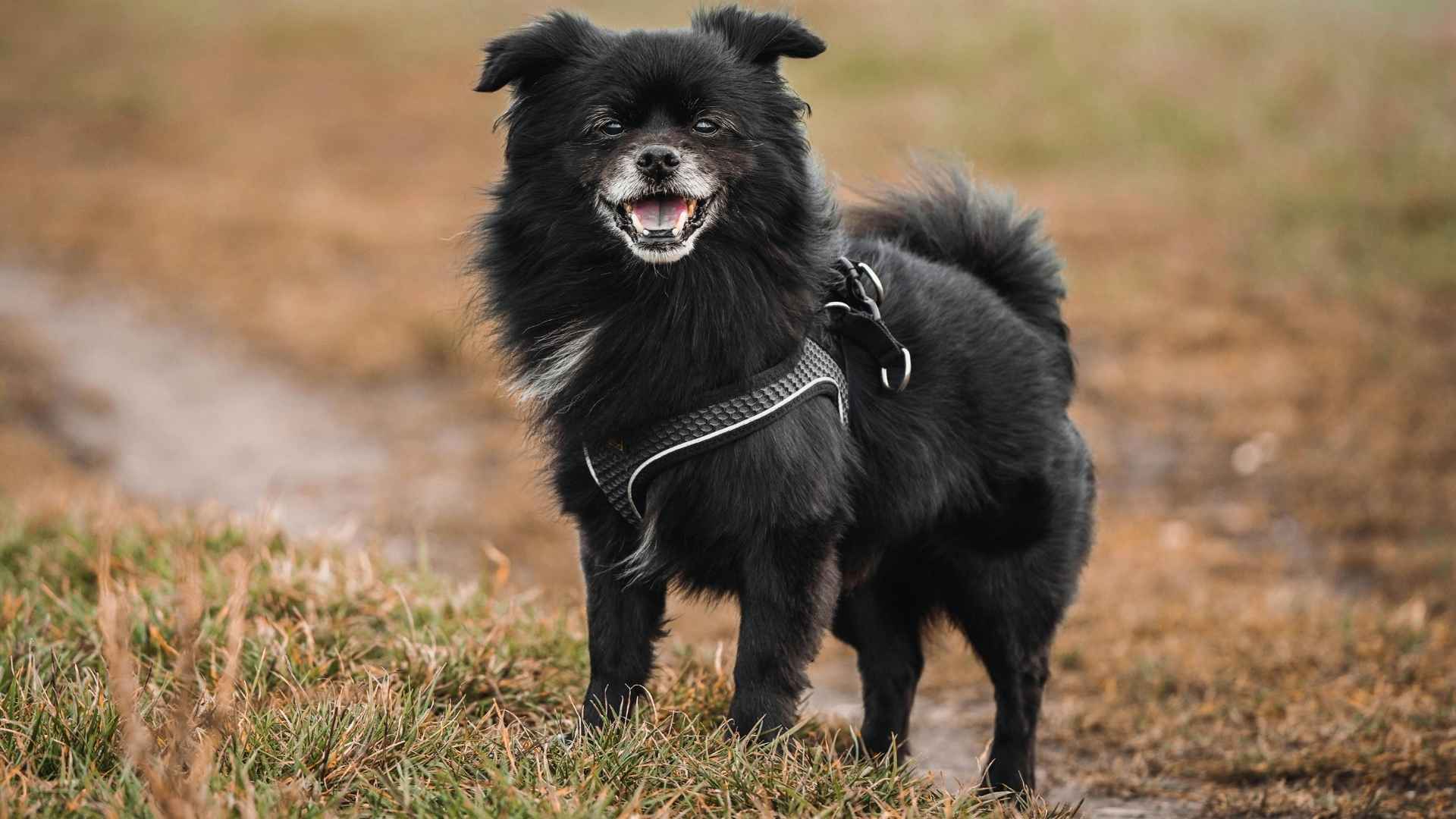Dogs have walked beside humans for thousands of years, long before cities rose or alphabets were written. Some scientists estimate domestication began between 14,000 and 29,000 years ago, while DNA research suggests dogs may have split from their wolf ancestors as far back as 130,000 years ago. Through the ages, many breeds have come and gone, but a select few have endured, carrying ancient legacies into the modern world.
Among these time-tested companions are small dog breeds that once curled up at the feet of emperors, nobility, and spiritual leaders. Their compact size didn’t limit their impact; these pups served as cherished companions, temple guardians, and symbols of prestige in societies long gone. Despite their stature, many of these ancient breeds have rich, fascinating histories that span continents and cultures.
Today, these miniature marvels still charm us with their enduring elegance, loyalty, and spirited personalities. Join us as we explore the ancient small dog breeds that have not only survived but thrived through centuries of change.
Ancient Small Dog Breeds
1. Pekingese

The Pekingese is a proud symbol of ancient elegance in a small, portable package. With its lion-like mane, flattened face, and noble demeanor, this breed reflects centuries of refinement and cultural reverence. Bred to sit upon the laps of Chinese royalty, Pekingese dogs carry an air of importance that echoes their imperial past.
WebMD reports that Pekingese typically have a lifespan of about 12 to 14 years, which is average for small dog breeds. Despite their petite frame, standing just 6 to 9 inches tall and weighing under 14 pounds, they possess a bold and dignified presence, making them beloved companions in modern homes, especially apartments.
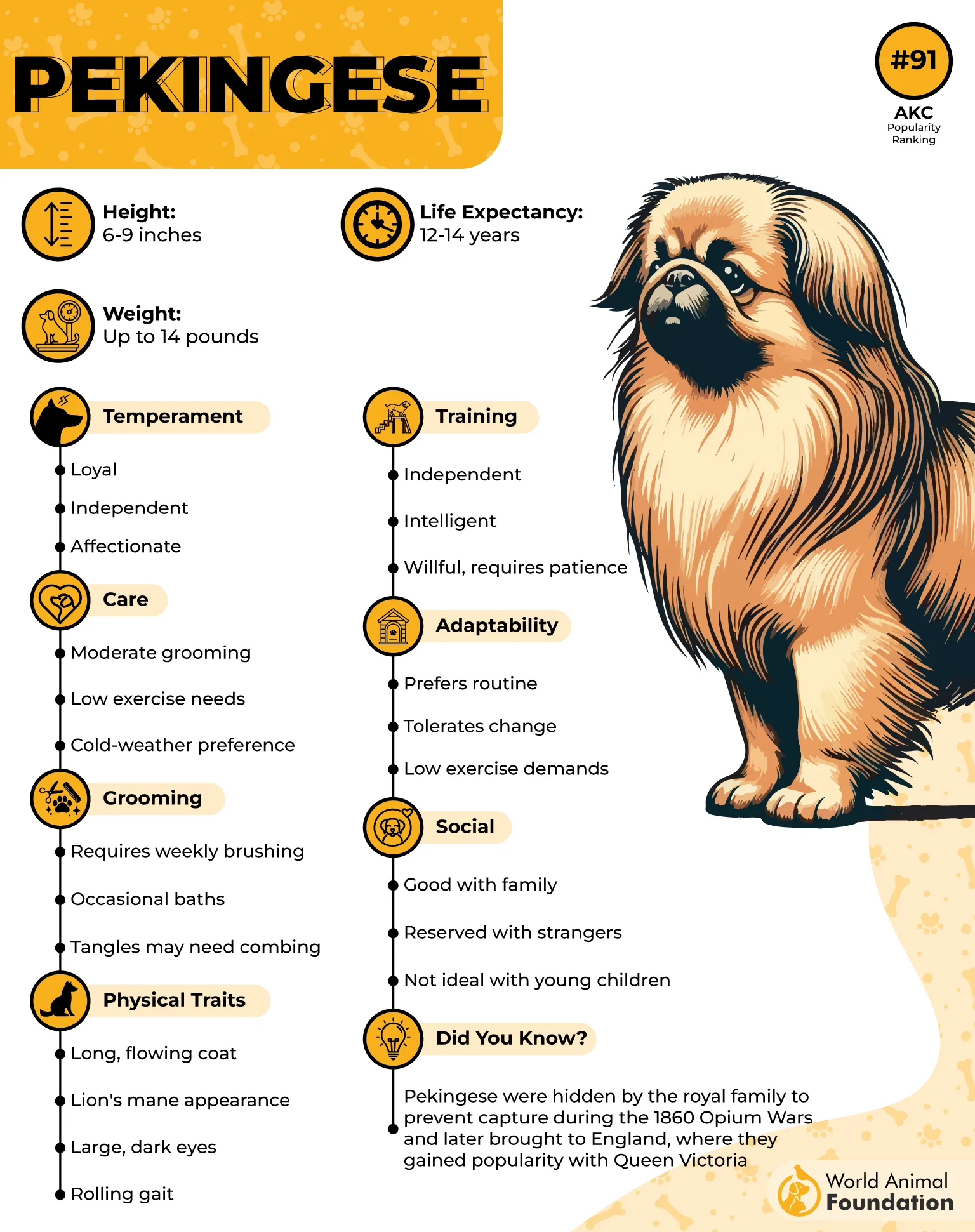
History
This ancient toy breed traces its origins back to imperial China, where Pekingese dogs were considered sacred and reserved exclusively for members of the royal family. Their status was so elevated that people were once required to bow to them in respect.
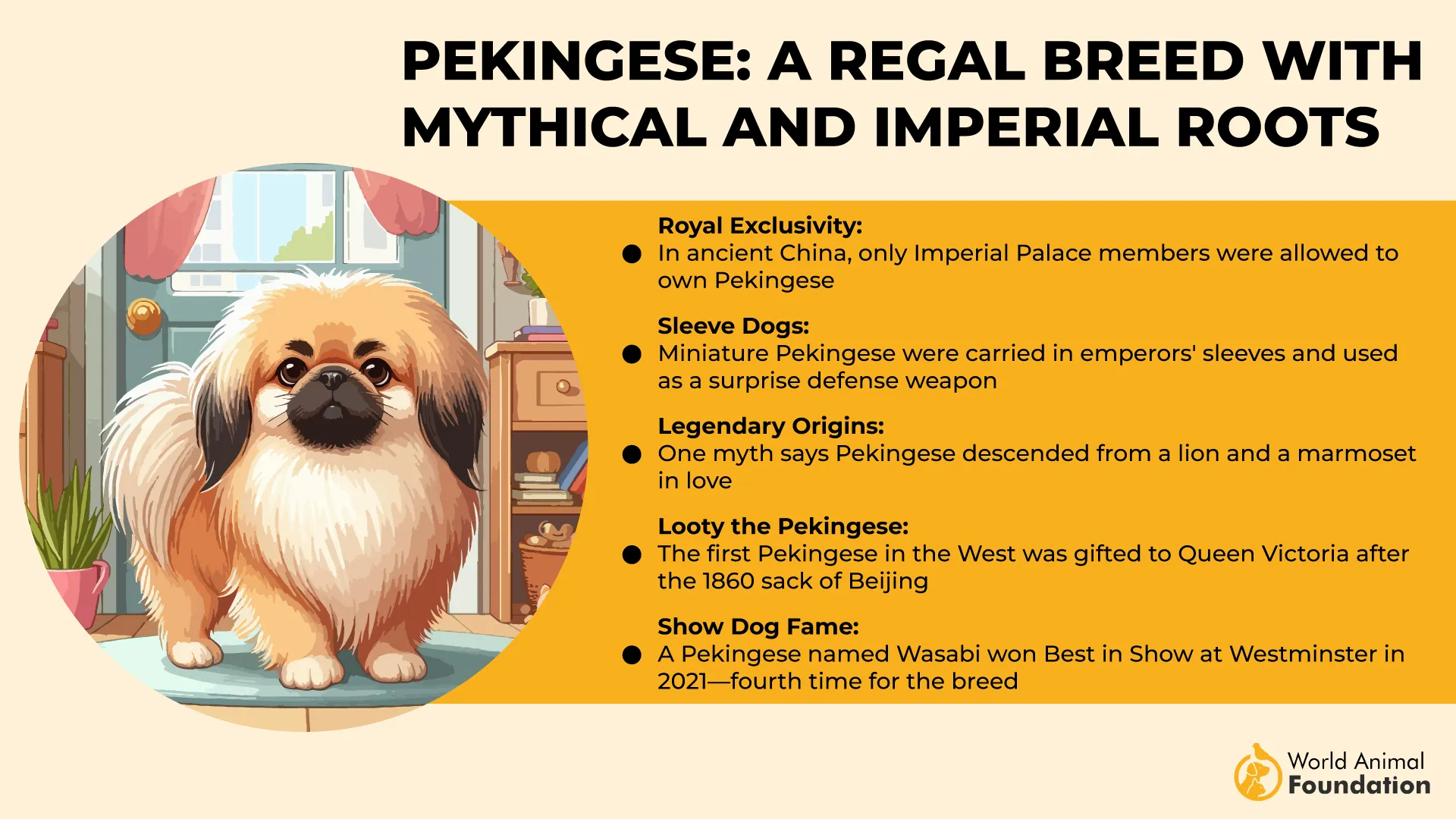
The breed made its way to the West after English forces invaded the Summer Palace in Beijing in 1860, bringing five dogs back to England. One was famously gifted to Queen Victoria, sparking admiration across Europe.
Fun Fact: This fluffy dog is often called the “lion dog” due to its flowing coat and courageous, regal disposition.
2. Tibetan Spaniel
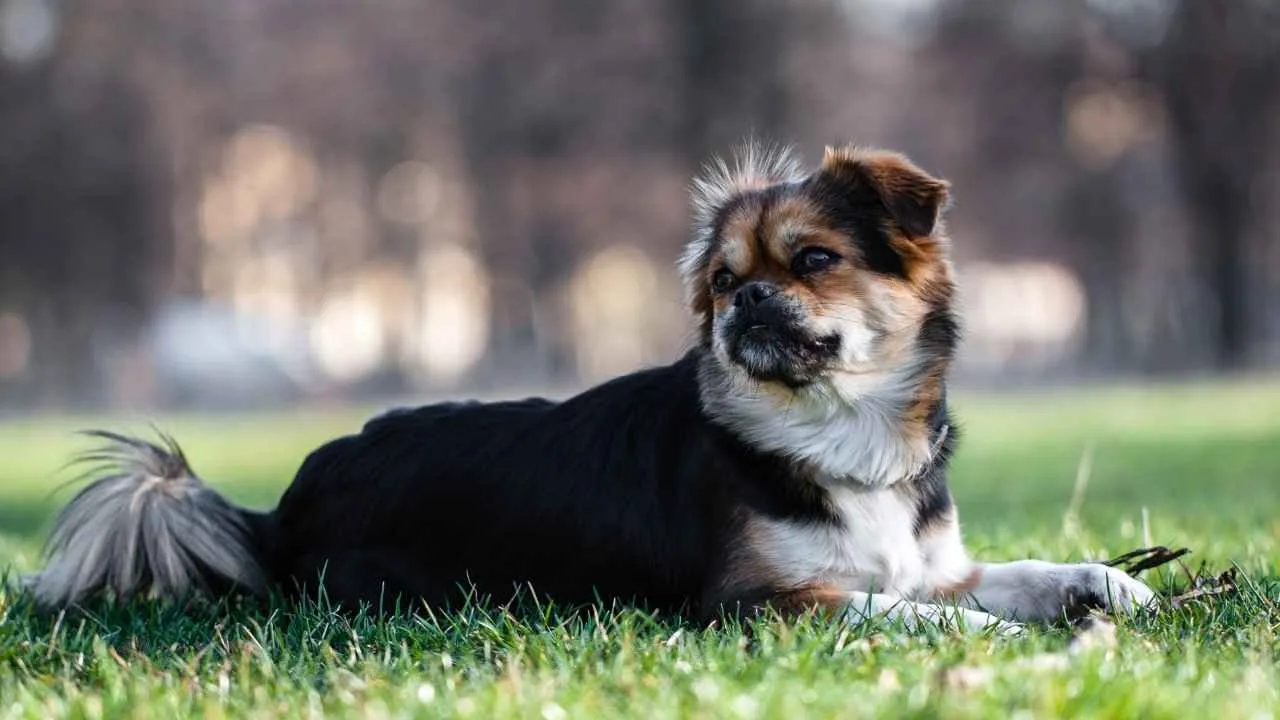
They have a noble bearing and a spirited personality. Despite their modest size, typically 10 inches tall and 9 to 15 pounds, Tibbies carry themselves with the dignity of a dog twice their size. Agile and confident, their plumed tails and luxurious manes evoke a lion-like image that once symbolized spiritual significance.
These little guardians were bred not just for companionship, but to watch over sacred spaces from high monastery walls. PetMD suggests that although Tibetan Spaniels have long, lovely coats, their grooming requirements are surprisingly low-maintenance and can usually be managed at home by their owners.
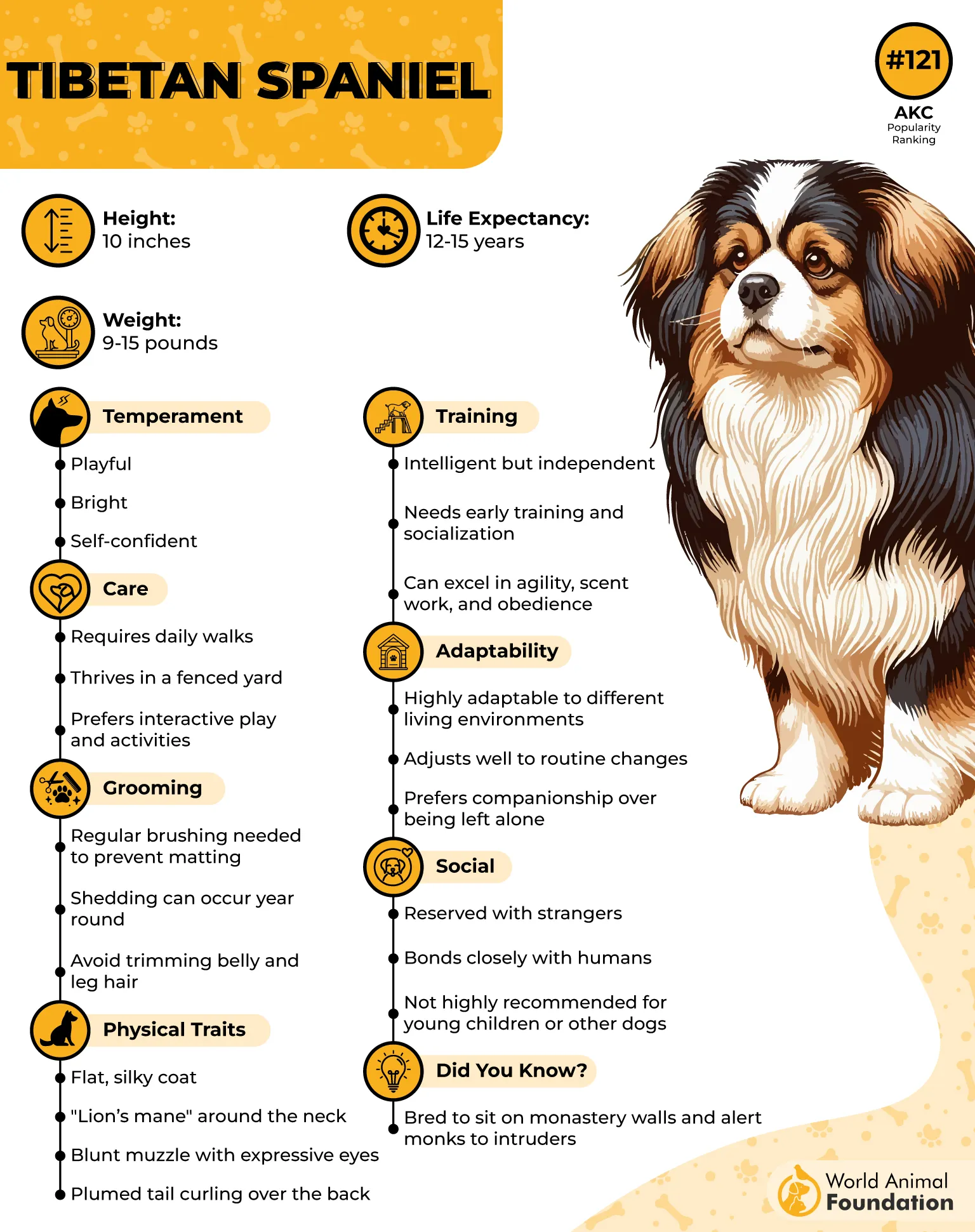
History
These guard dogs have an impressive legacy, dating back over 2,000 years. Originating in the Himalayan mountains, they were raised by Buddhist monks as trusted companions and sentinels. With sharp eyesight and keen hearing, they served as early warning systems, alerting their larger Tibetan Mastiff counterparts to danger.
They were so highly regarded that they were gifted only to close allies and royalty, never sold. In Tibet, they were lovingly called “Simkhyi,” meaning house or bedroom dog. The name “Spaniel” was added later, borrowed from the French word for comforter. The breed reached England in the late 1800s and was officially recognized by the American Kennel Club in 1984.
Fun Fact: Tibetan Spaniels once perched atop monastery walls to act as lookouts, barking at wolves or intruders before slipping back into their warm temple quarters.
3. Lhasa Apso
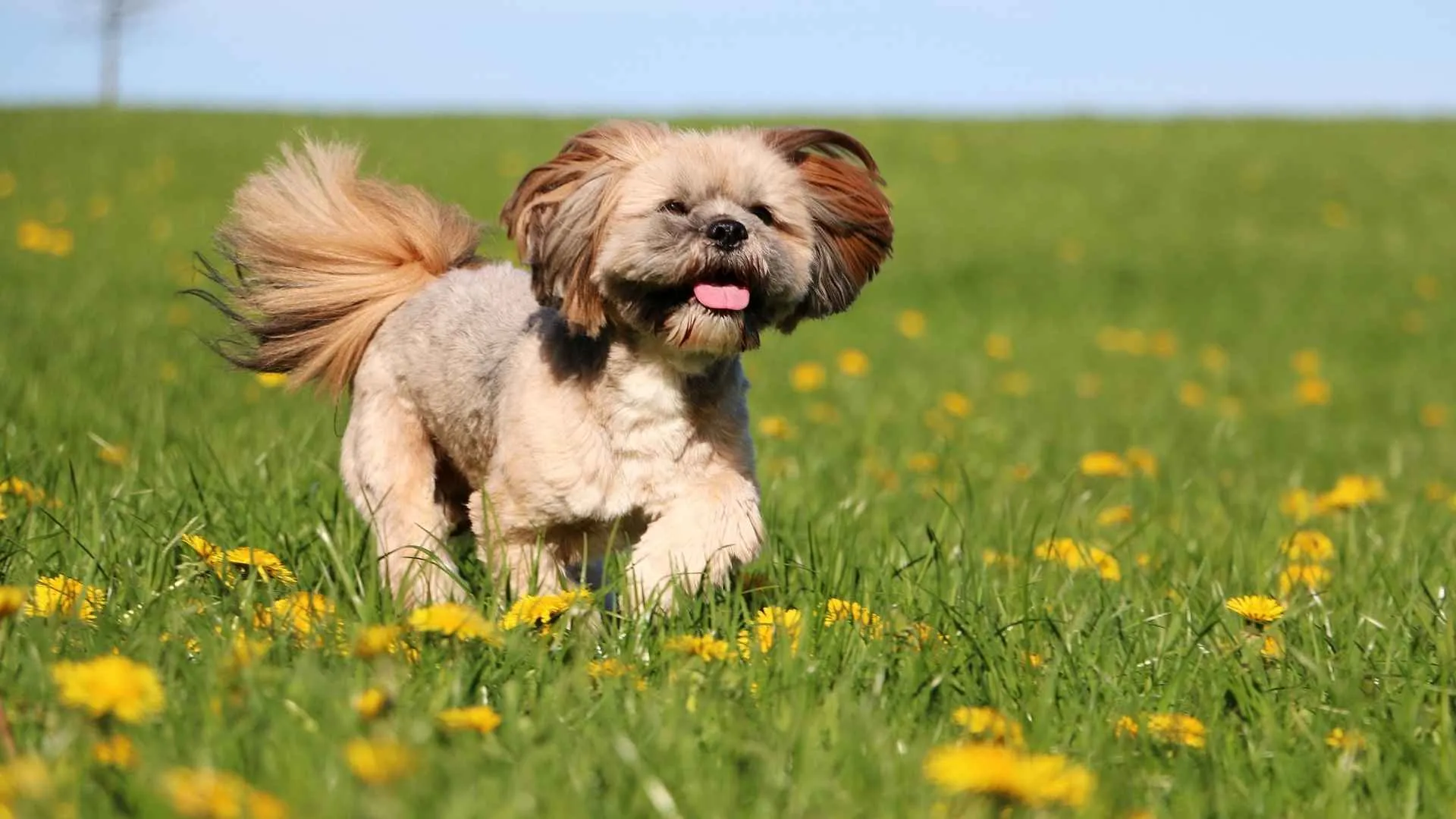
Though small in size, these dogs were never meant to be lap warmers alone. Strong-willed and perceptive, they were bred to be indoor sentinels, keen guardians of sacred places. Their dense, insulated coat helped them withstand the chill of the Tibetan mountains, while their alert nature made them invaluable to monks and spiritual leaders.
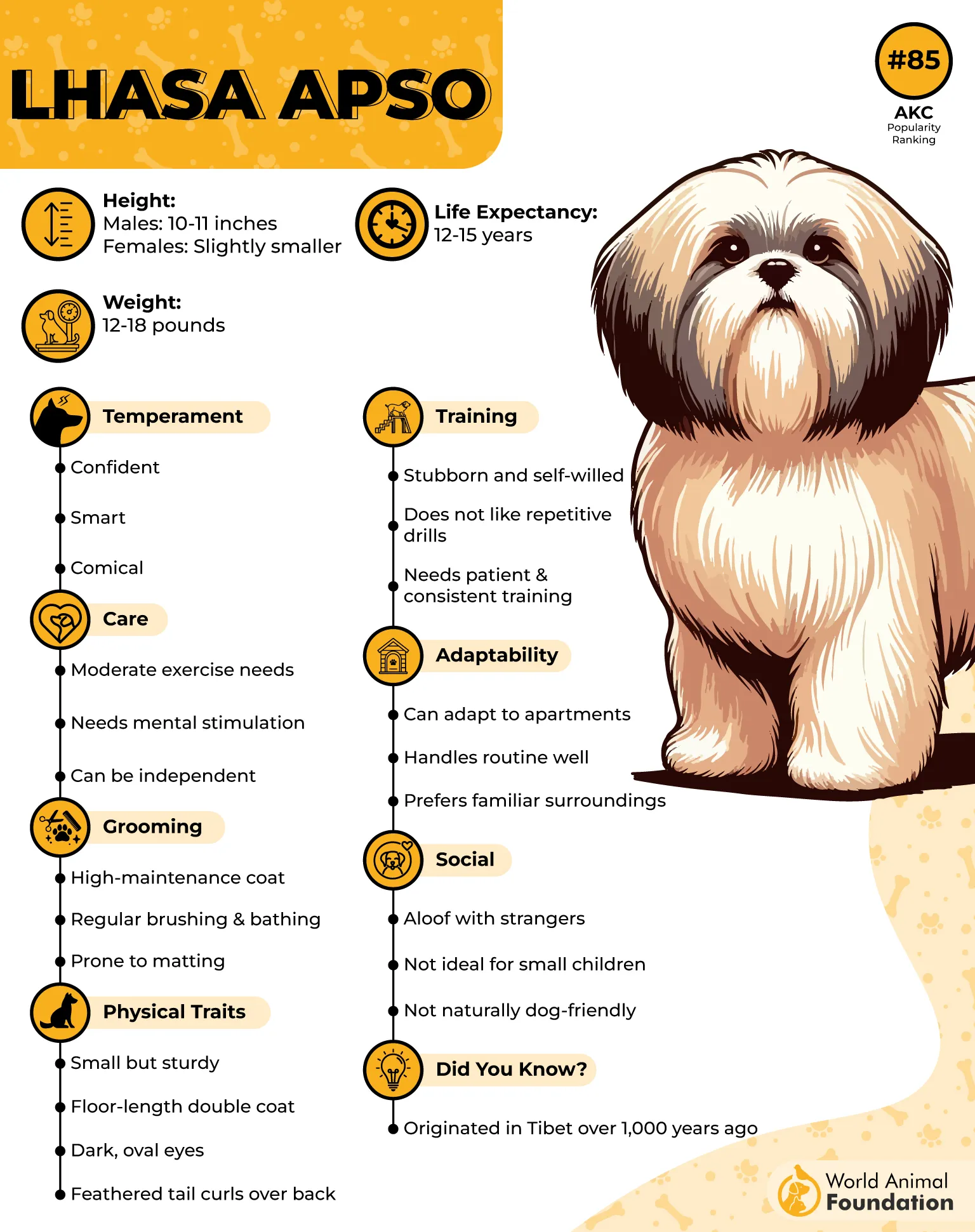
History
The Lhasa Apso hails from Tibet, where it was bred in monasteries around a thousand years ago. Revered as protectors of sacred spaces, these dogs earned the name “Abso Seng Kye,” meaning “Bark Lion Sentinel Dog.”
They worked indoors, sounding the alarm when uninvited guests made it past the larger outdoor guardians. Named after the holy city of Lhasa, they became trusted companions of monks and nobility. Genetic studies place them among the 14 most ancient dog breeds recognized by the American Kennel Club.
Fun Fact: Lhasa Apsos were so highly regarded in Tibet that they were rarely sold, only gifted as sacred offerings of goodwill.
4. Japanese Chin
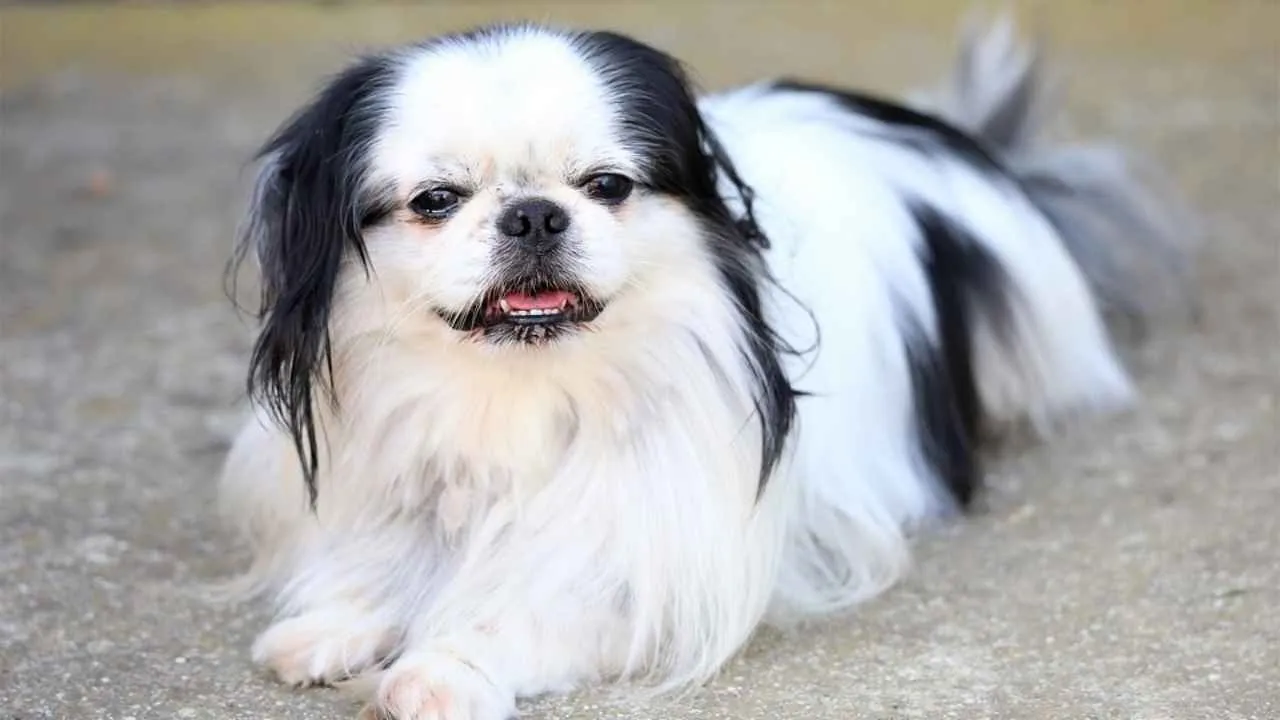
The Japanese Chin carries an air of grace and charm that clearly reflects its noble roots. With its silky coat, feathered tail, and expressive eyes, this breed is the embodiment of refined elegance in a compact form.
Though small in size, this royal dog has a big personality, proud, intelligent, and slightly mischievous. Ideal for apartment living, they blend easily into modern homes while still maintaining the dignified attitude of their ancient lineage.
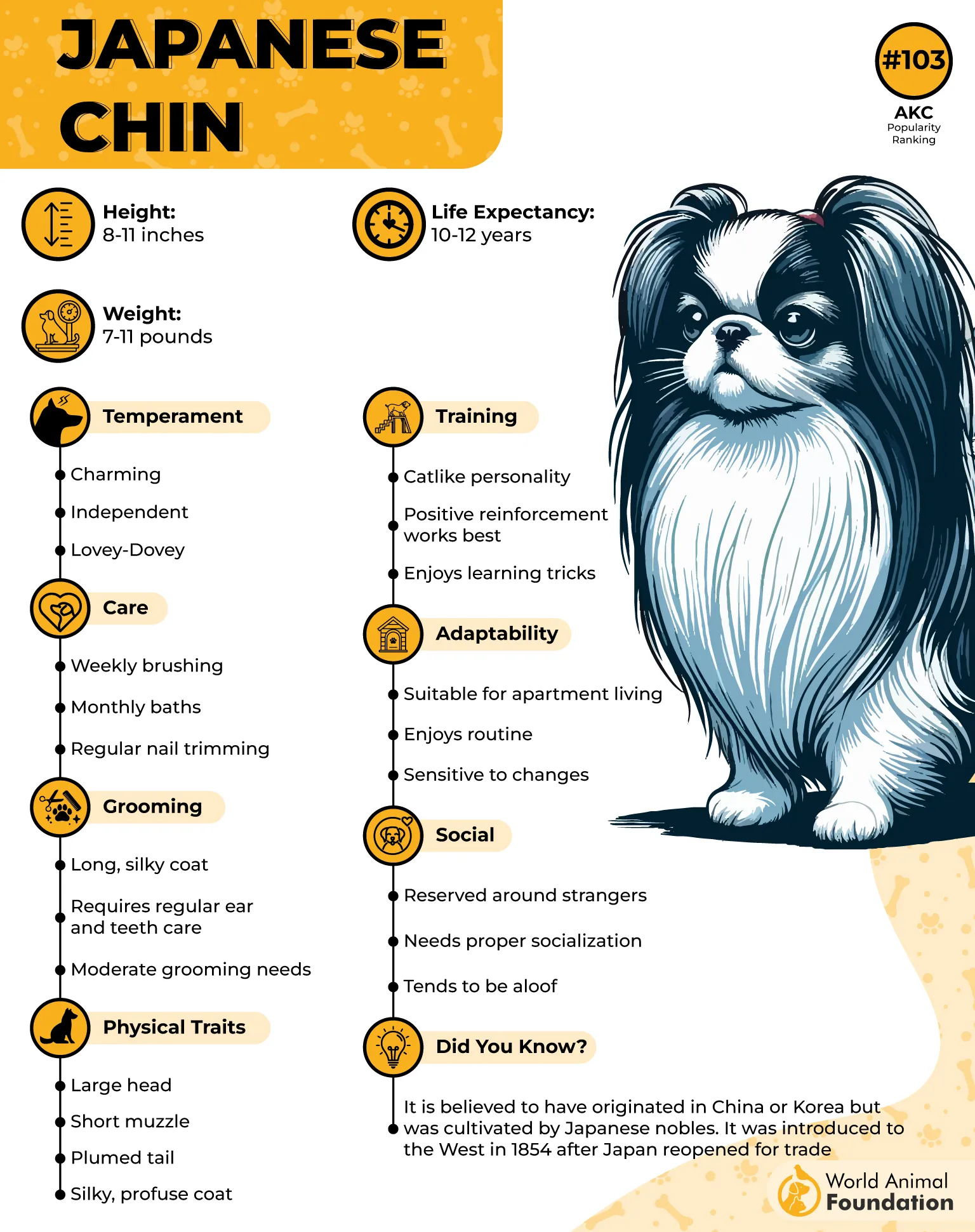
History
Though their exact origin remains a topic of scholarly debate, the Japanese Chin is widely believed to have descended from small companion dogs brought from China or Korea. Their status soared in Japan, where they became favored pets of royalty and Buddhist monks over a thousand years ago.
These little dogs were so highly treasured that they were guarded within palace walls and attended by eunuchs. By the mid-1800s, as Japan opened to foreign trade, Chins were gifted to dignitaries and traders, eventually charming their way into the courts of Europe, most notably into the heart of Princess Alexandra, wife of future King Edward VII.
Fun Fact: The American Kennel Club officially recognized the Japanese Chin in 1888, underlining its longstanding popularity in the West.
5. Maltese
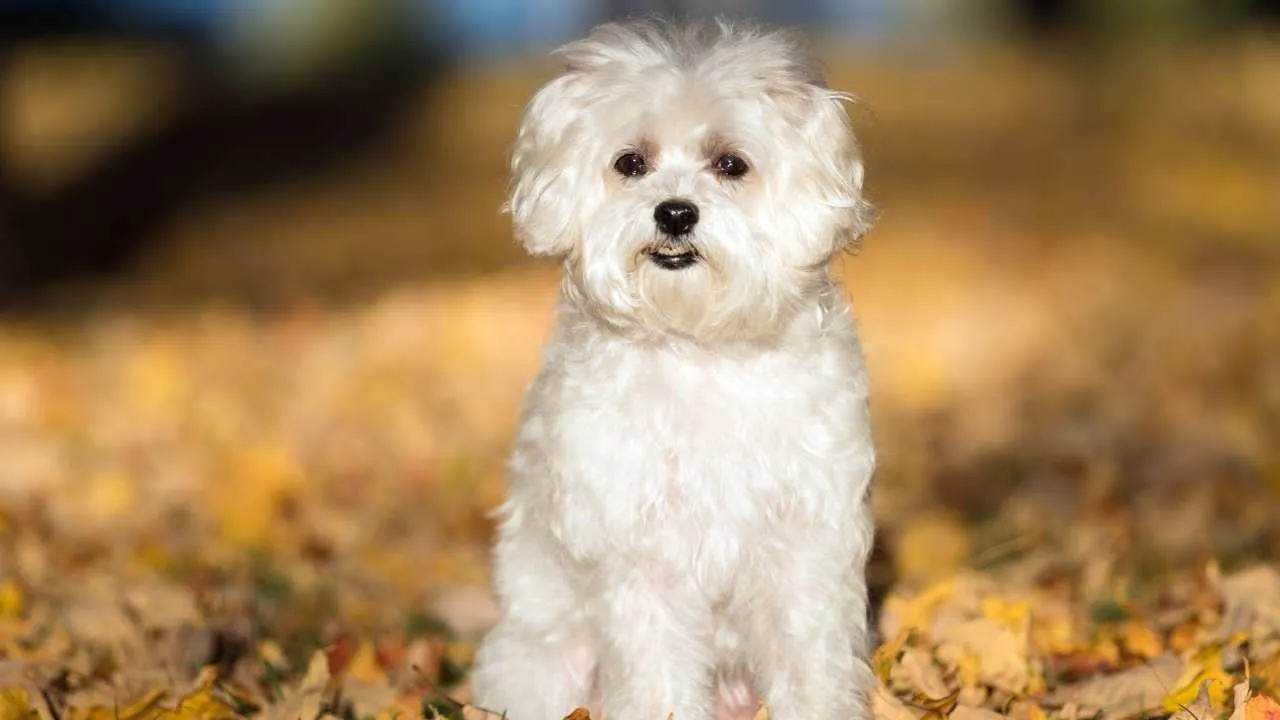
The Maltese is a small yet striking breed known for its flowing white coat and lively spirit. Compact and charming, this dog has long been adored for its elegance and affectionate personality. Weighing just 6 to 9 pounds and standing under 10 inches tall, the Maltese fits seamlessly into both city apartments and country homes, maintaining its timeless role as a devoted companion.
Hills Pet mentions that the Maltese has long been treasured by society, with one historical account noting a Maltese being sold in the 1500s for what would now equal about $2,000.
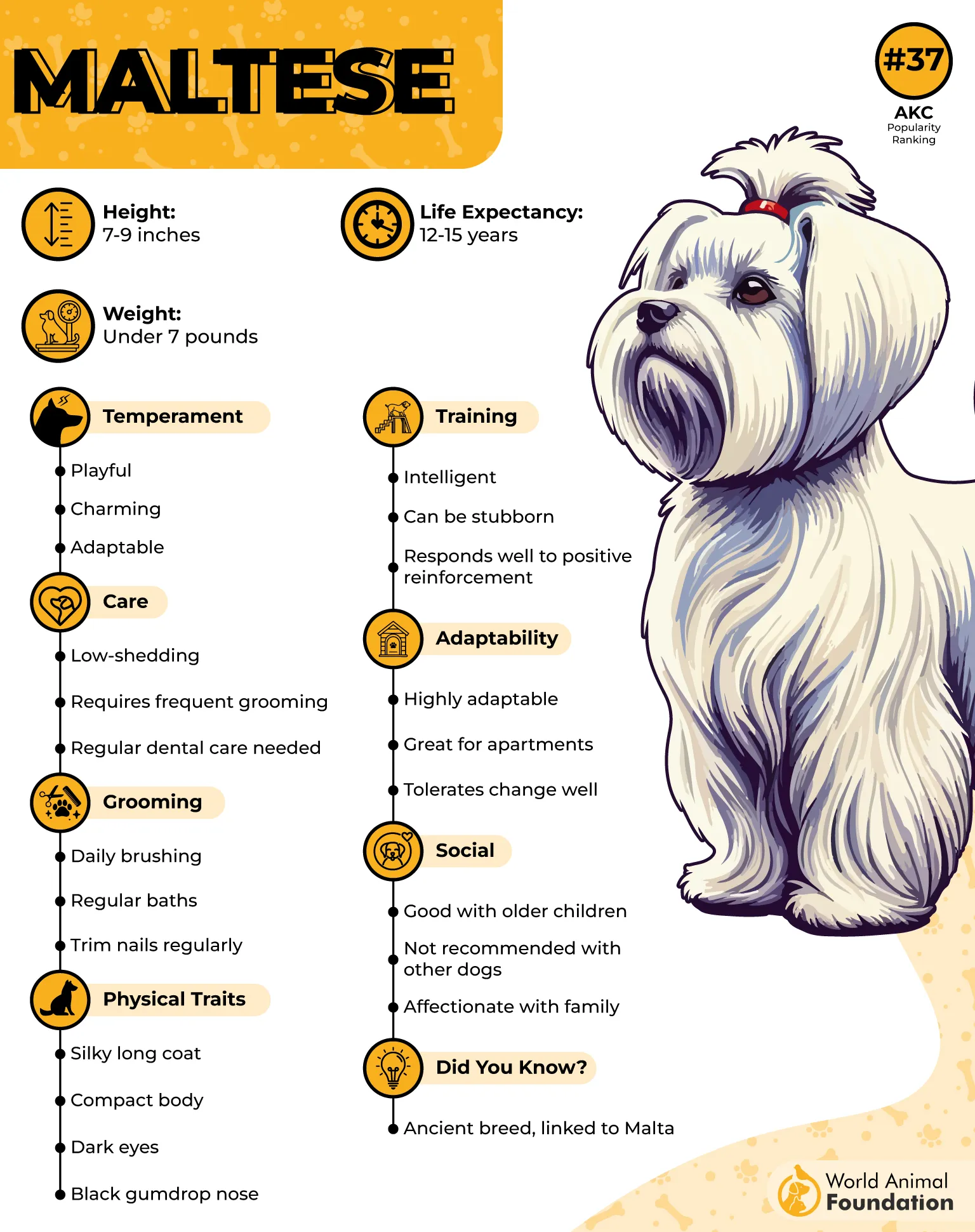
History
One of the oldest dog breeds in the world, the Maltese traces its lineage back thousands of years. Though its exact origins are debated, most historians agree it developed on the Mediterranean island of Malta. The Phoenicians likely introduced the breed around 1000 BCE, possibly trading them during their voyages across the ancient world.
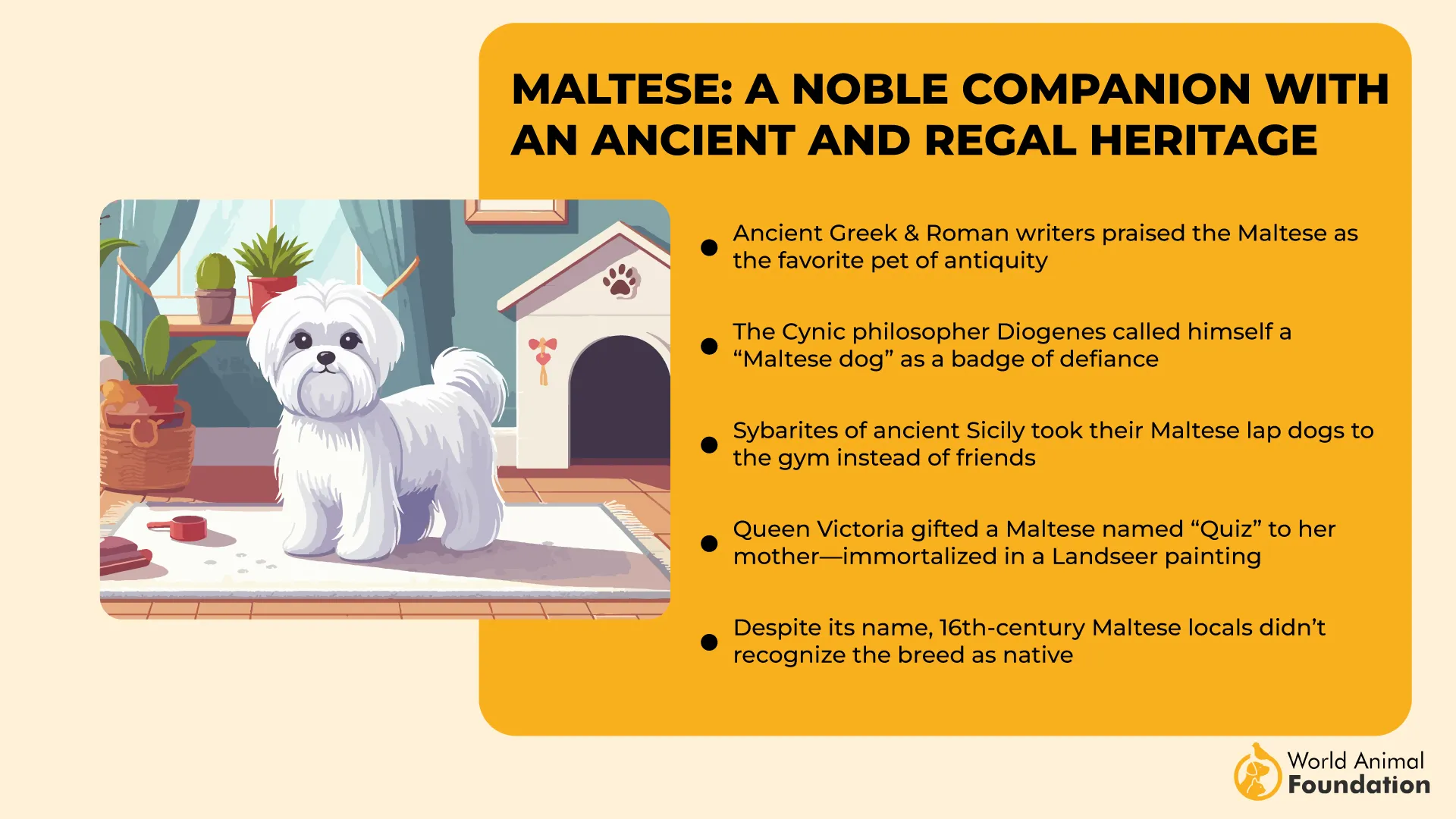
On Malta, these affectionate dogs were bred purely for companionship, treasured by noblewomen who carried them in their sleeves or carriages. By the 19th century, the Maltese had become a mainstay in British and American households and dog shows.
Fun Fact: Despite its regal look, this oldest dog breed may have originally served a practical role on ships, helping keep food stores rodent-free during long sea voyages.
6. Affenpinscher
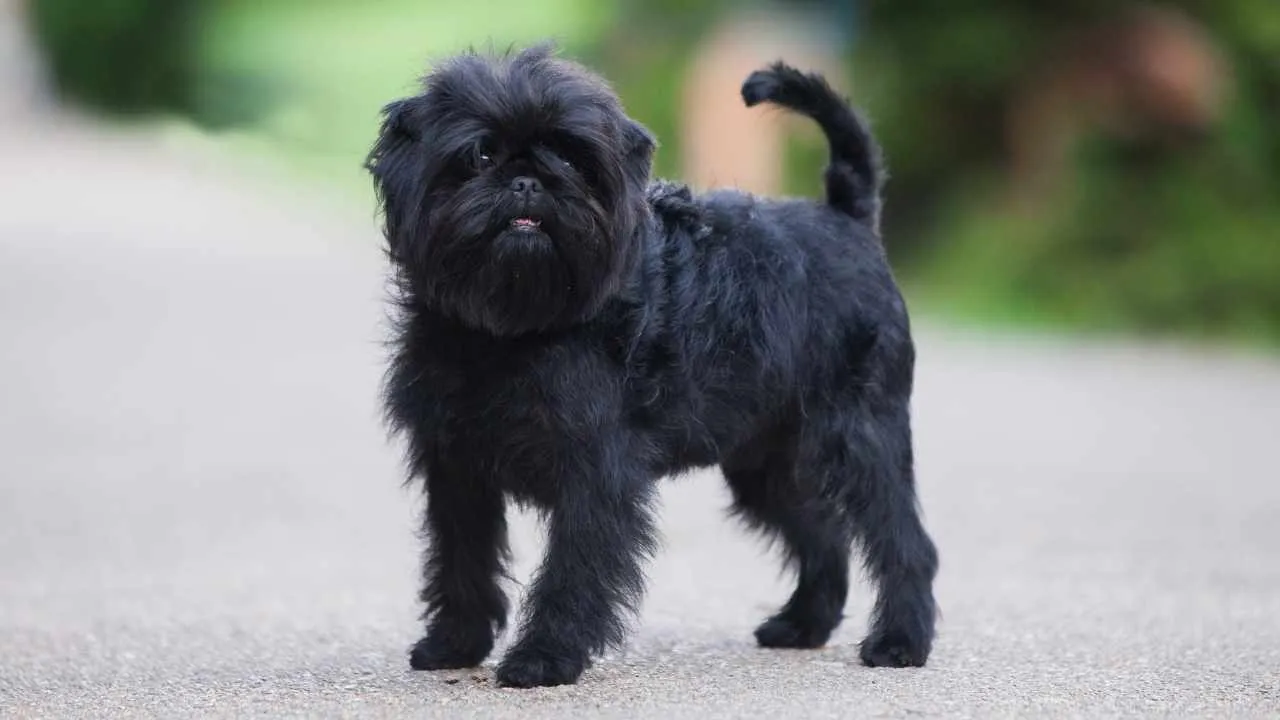
The Affenpinscher is a pint-sized powerhouse with a distinct monkey-like face and a personality as bold as its appearance. Despite its toy-like size, this dog was originally bred to be a fearless vermin hunter, lending it a gritty charm that endures today. Purina reports that the Affenpinscher is energetic, confident, determined, and bold, yet also endearing and amusing, traits that helped it stand out from other working breeds and become a beloved companion.
Weighing between 9 and 13 pounds and standing just under 12 inches tall, these athletic dogs have a wiry coat, shortened muzzle, and mischievous eyes that are unmistakable. It’s a spirited companion with a strong sense of independence and a knack for comic timing.
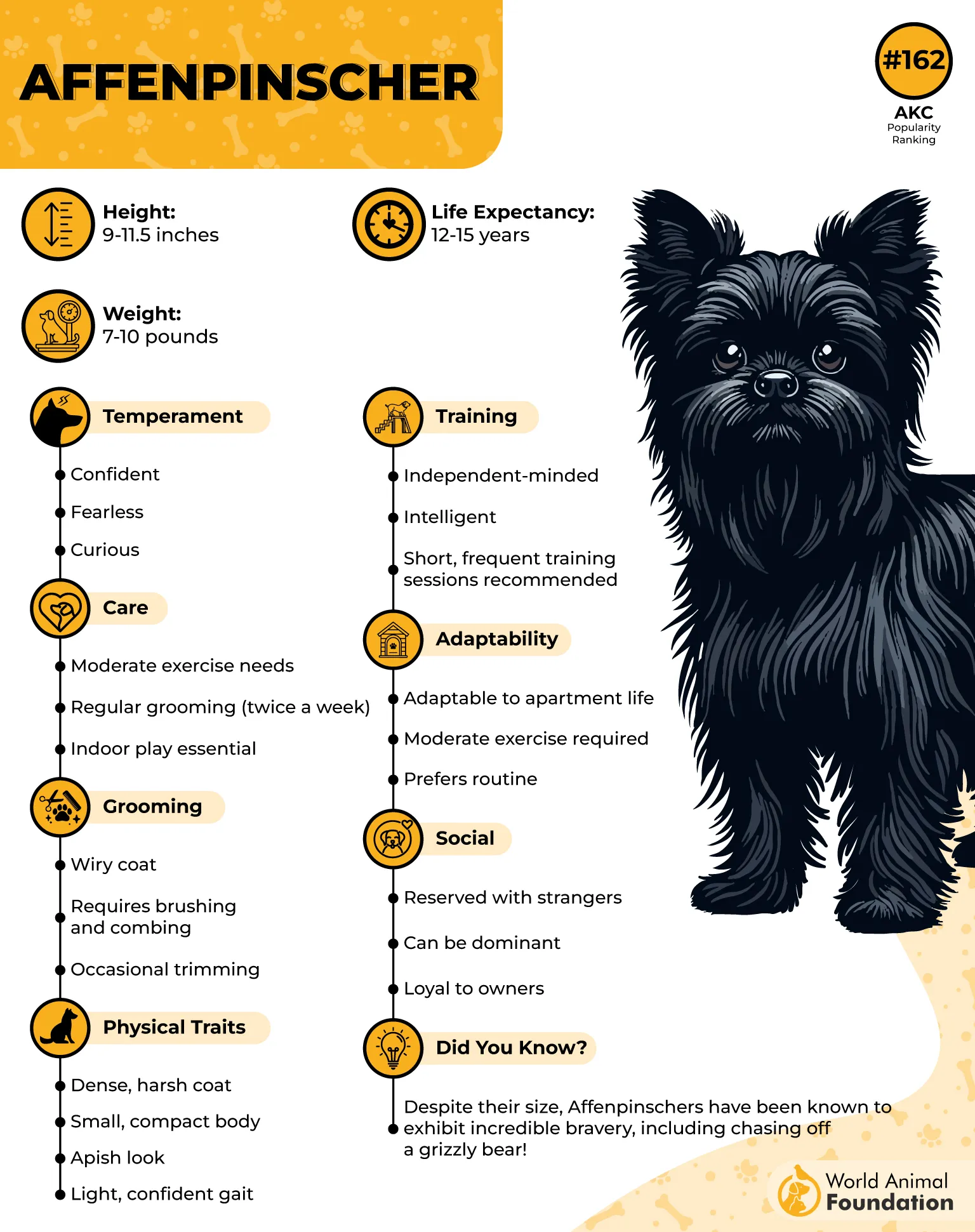
History
The Affenpinscher’s lineage dates back to 17th-century Germany, where it was developed by crossing Belgian Griffons with wire-haired Pinschers. Originally used to chase rodents in stables, these small but determined dogs quickly earned their place indoors, first in kitchens, then in hearts.
By the 1800s, Affenpinscher clubs had emerged in both France and Germany, and the breed’s popularity spread. Their genetic influence contributed to the development of other dogs, including the Brussels Griffon and Miniature Schnauzer.
Fun Fact: In 2013, an Affenpinscher named Banana Joe made history by winning Best in Show at the Westminster Dog Show.
7. Chinese Crested

Among ancient small dog breeds, the Chinese Crested stands out for its unique appearance and rich cultural roots. This playful, devoted toy breed comes in two distinct varieties, hairless and “powderpuff”, sometimes even within the same litter.
With a height of 11 to 13 inches and weighing between 8 to 12 pounds, this lightweight, portable pup is ideal for close companionship and travel. Whether in a bag, on a boat, or curled in a lap, the Chinese Crested adjusts easily and thrives wherever its pet parent goes.
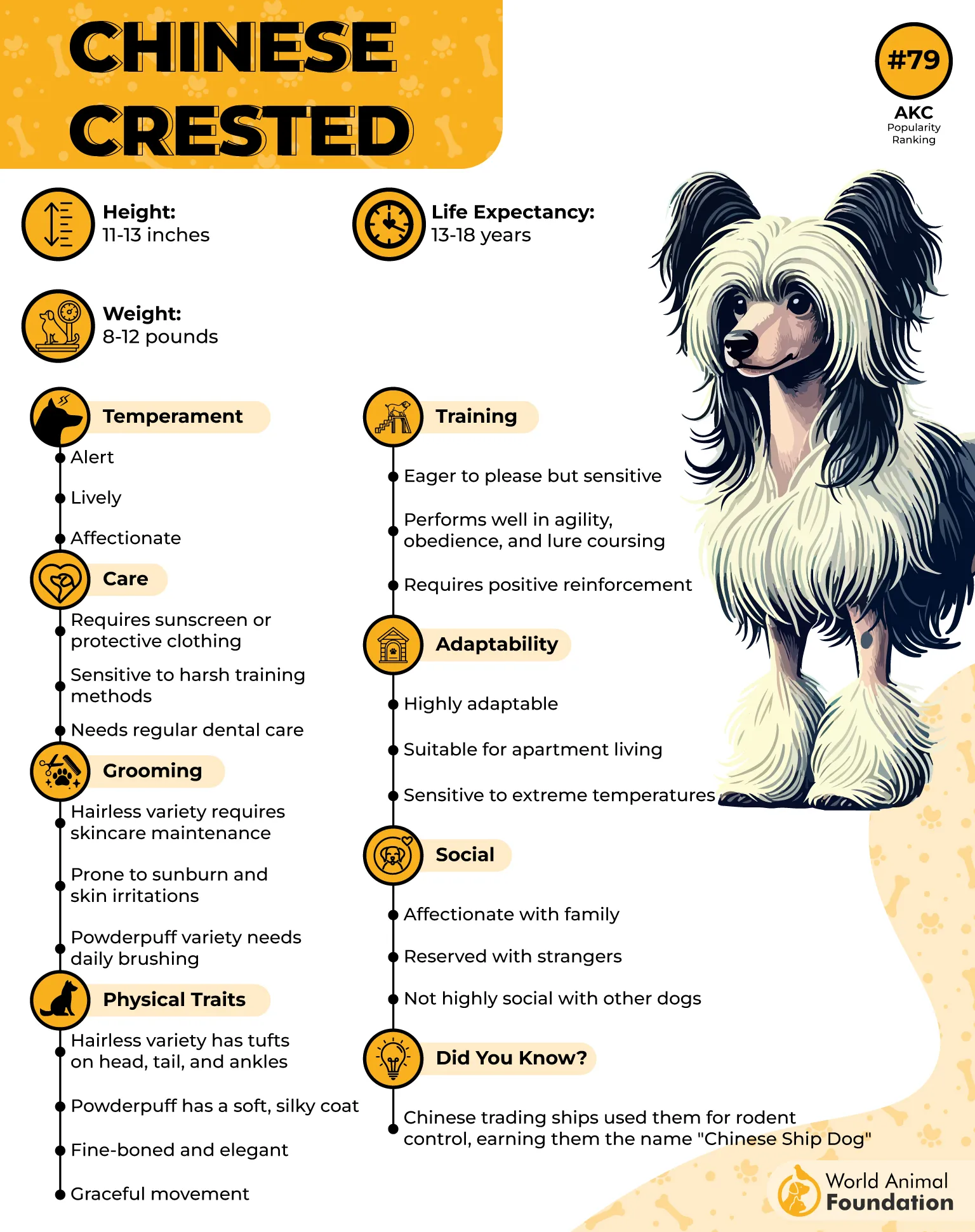
History
The Chinese Crested has ancient origins, dating back to ancient China, where they were treasured by aristocrats and Buddhist monks alike. Monks believed these dogs offered protection from evil spirits and often tucked them into the sleeves of their robes.
By the 15th century, European sailors began using them on ships to control rats, which helped spread the breed to international ports. Their exotic charm eventually caught the attention of European nobility, and by the 1970s, the breed gained official recognition from the American Kennel Club.
Fun Fact: Chinese Cresteds were originally bred to travel by sea and served as ratters aboard ships, making them among history’s most well-traveled toy breeds.
Conclusion
Ancient small dog breeds offer more than charm; they represent living history. From the sacred lion-like Pekingese to the whimsical, hairless Chinese Crested, these dogs trace their roots to royal courts, sacred temples, and merchant ships. While some, like the Shih Tzu, share ties with imperial palaces, others, such as the Afghan Hound and Akita Inu, carry lineages steeped in endurance and loyalty. These breeds helped shape the bond between humans and modern dogs, proving that companionship has always transcended size.
Interestingly, not all ancient breeds were bred for laps. Sled dogs like the Alaskan Malamute and resilient breeds from the Middle East require strength, stamina, and often at least an hour of activity daily. While today’s homes may be smaller, many of these noble companions still enjoy a balance of comfort and physical engagement. Whether covered in flowing coats or among the few elegant hairless dogs, these ancient canines continue to inspire admiration and affection around the world.


